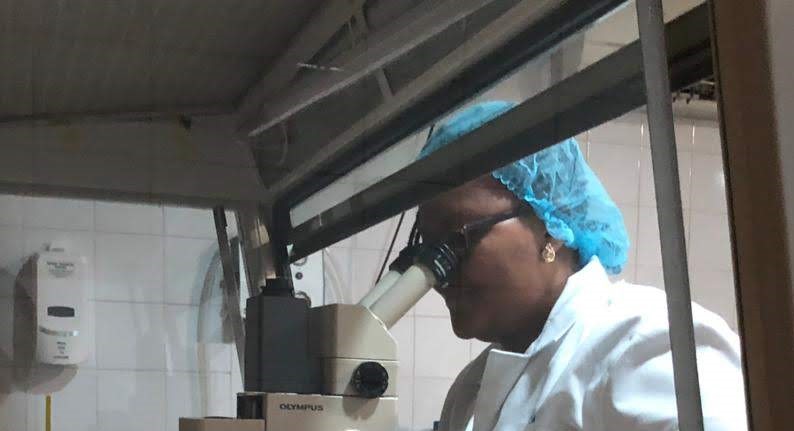In vitro fertilization (IVF) is a complex series of procedures used to help with fertility or prevent genetic problems and assist with the conception of a child. During IVF, mature eggs are collected (retrieved) from ovaries and fertilized by sperm in a lab. Then the fertilized egg (embryo) or eggs (embryos) are transferred to a uterus. One full cycle of IVF takes about three weeks. Sometimes these steps are split into different parts and the process can take longer
If you are considering in-vitro fertilization, it is important to understand what to expect. Below, we will review the steps of in-vitro fertilization.
OVARIAN PREPARATION
EGG RETRIVALS
FERTILIZATION AND EMBRYO MATURATION
EMBRYO TRANSFER
Steps of In-Vitro Fertilization
OVARIAN PREPARATION
The patient will receive a number of fertility injections to encourage the maturation of egg follicles while preventing ovulation. Each of the steps of in-vitro fertilization is associated with the use of different medications. Most patients will follow a schedule similar to the following:
DOWNREGULATION- this is the process of supressing the natural hormones of the woman, so as to be able to introduce them externally. The woman starts on day21 of her cycle, GNRH injections daily or a depot shot for 2weeks, she bleeds and a TVS is done on day 5 of bled, endometrium lining should measure <3mm in size, after which stimulation begins
Or
GnRH antagonist CYCLE
On the second or third day, the patient will go to the office to have a transvaginal scan (TVS) If a group of follicles is beginning at that time, the patient may begin taking fertility medications immediately
A medication that acts as a GnRH antagonist, such as Cetrotide, is added on the seventh day to prevent the woman from ovulating too early.
Stimulation
Follicle-stimulation hormone (FSH) – Injections of an FSH medication, such as Gonal f, is taken daily for 7days, On the seventh day, the woman will have another TVS to determine the next steps. Human chorionic gonadotropin (hCG) – On the seventh or eighth day, the dose of FSH is reduced or increased based on woman’s response and hCG is added.
Trigger injection – This step occurs as early as the tenth day, or as long as the fifteenth day; on average, women are ready for the trigger injection at 9 or 10 days. For fresh embryo transfer, the woman will receive a high dose of FSH followed by a high dose of hCG.
EGG RETRIEVAL
The eggs are retrieved two days after the trigger injection is given. The eggs are retrieved using a minimally invasive procedure, which is performed in an outpatient surgery center. To retrieve the eggs, the doctor uses an ultrasound to guide his actions. A thin, long needle is inserted, passing through the vagina to reach the ovaries. Once the needle is inside the egg follicle; fluid is aspirated. This step is repeated until all of the follicles have been aspirated.
After the egg retrieval, the woman will start taking progesterone to boost the chances that the embryo will implant once transferred. Progesterone is usually taken vaginally, but it can also be given intramuscularly. Progesterone continues after the embryo transfer.
FERTILIZATION AND EMBRYO MATURATION
The fluid that has been retrieved is then taken to the laboratory. The embryologist places the fluid under the microscope to determine how many eggs were successfully retrieved. Then, the embryologist identifies which eggs are mature and healthy looking – on average, about 60% of eggs meet these criteria.
The selected eggs are each injected with sperm. The fertilized eggs are incubated overnight. The next day, the embryologist will examine the fertilized eggs to determine whether fertilization successfully occurred and whether the embryos appear normal. About 70% of injected eggs will be normally fertilized on average.
The successfully fertilized eggs are placed back in the incubator to mature for several days, until they reach the blastocyst stage of embryonic development, with about 100 cells. 3 and 5 days after the sperm was injected, the embryologist will examine the embryos to make sure that they are developing normally. Only embryos that appear viable are selected for transfer.
EMBRYO TRANSFER
Embryo transfer is the final of the steps of in-vitro fertilization. Fresh embryo transfer usually occurs five days after the eggs are retrieved. Pregnancy only occurs if the embryo implants in the uterine lining. A blood test to confirm pregnancy can be performed 15 days after the embryo transfer and then a scan after 15days.
IVF may involve eggs, sperm or embryos from a known or anonymous donor. In some cases, a gestational carrier — a woman who has an embryo implanted in her uterus — might be used.
Opening Hours
